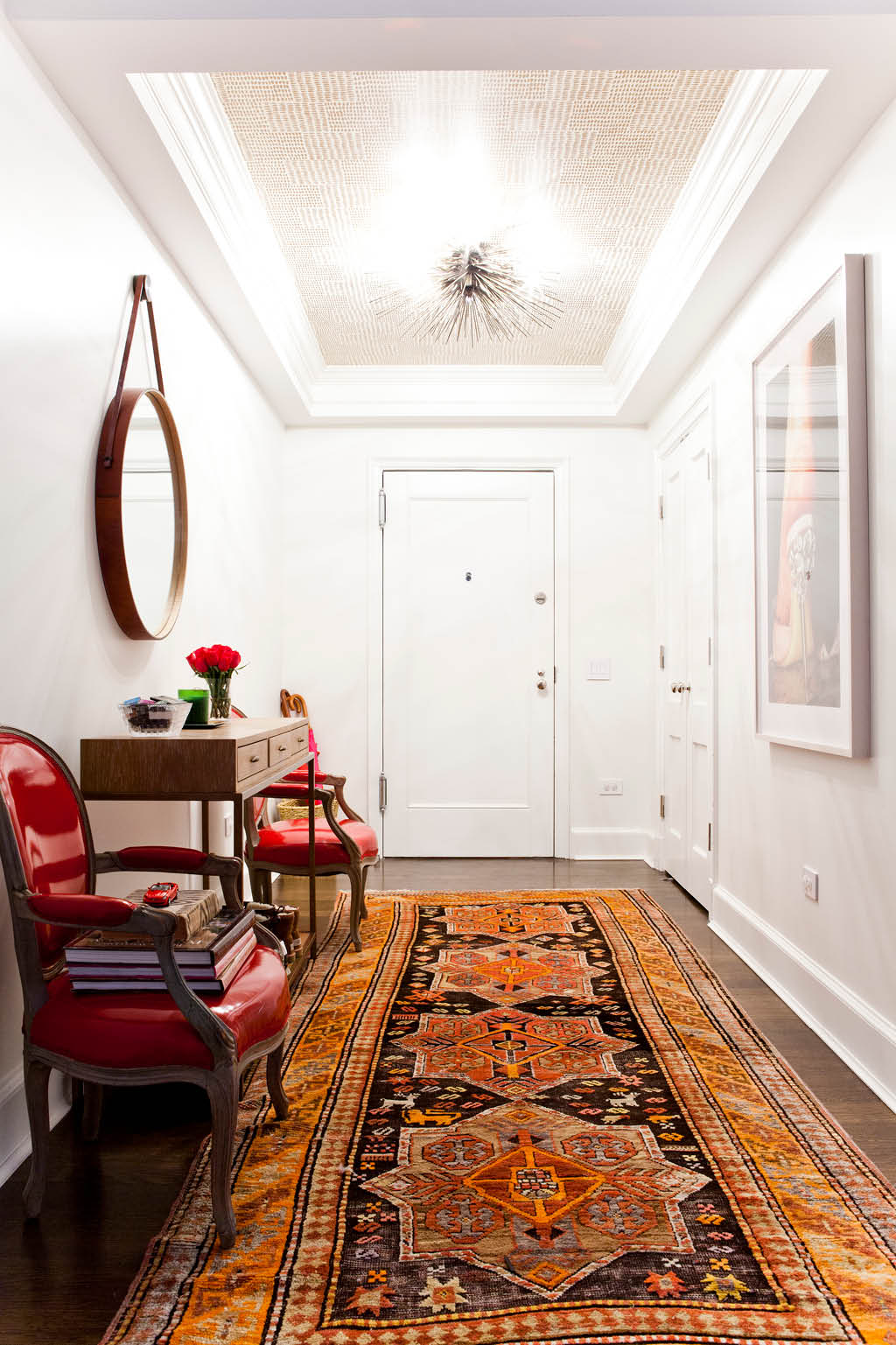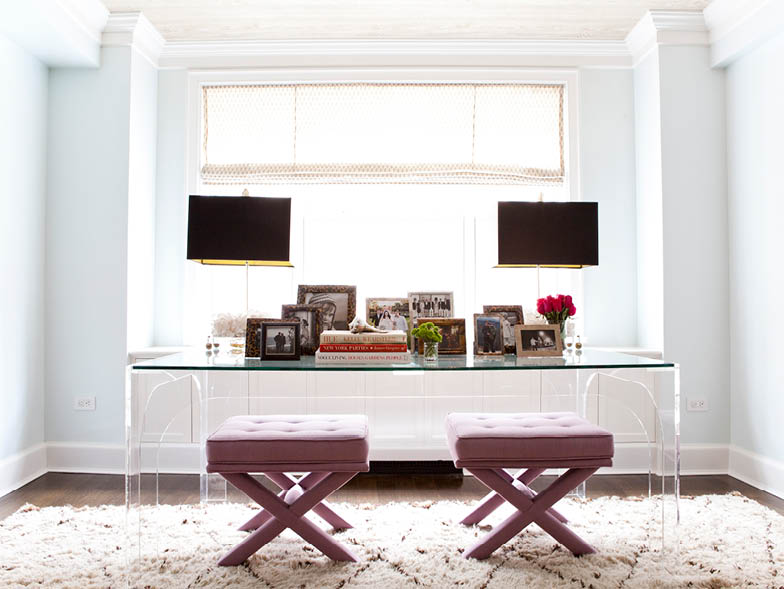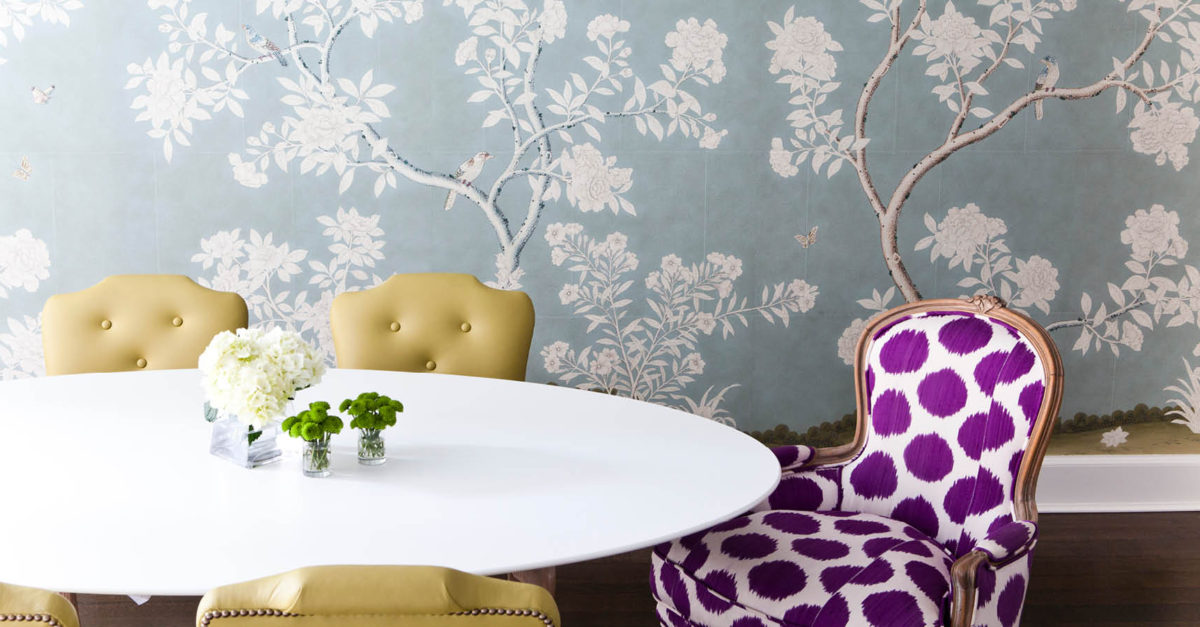Mad about Lilly Bunn
Quirky and personable interior designer Lilly Bunn believes good design should make living easier, above all else, and has made it her life’s mission to merge aesthetic with function for families all across New York City. She takes us through her revamp of a traditional downtown apartment
How did your interest in design start to manifest?
My mom was a clothing designer—she went to Parsons [School of Design in New York City]. She and I would sew rag dolls and make clothes for them. She would make little patterns, and I would finish them. When I was in sixth grade, she and I made a green velvet skirt for me to wear to a dance. She paints in oils now. She’s one of those people who’s always cooking things and making things and painting different rooms of the house and then painting them a different color. She wasn’t focused enough to be a decorator because she was always making changes and could never commit. She’d go through ten lamps in a year, but it was a great experience for me because I saw how all those different styles looked.
What pushed you to become a designer?
I always loved interior design, but it wasn’t always part of my life. When I first graduated college [with a bachelor of arts in art history], decorating a place was not in the forefront of my mind. I was just getting to the city, and I was living in a tiny studio apartment. When I was in my twenties, I didn’t feel like I had the experience to be a decorator. No one would have taken me seriously. When I was twenty-two, I wanted to spend all my money on clothing and shoes—like blue jeans and high heels. When I got into my later twenties, I got tired of buying something new every season. It’s expensive, and there is so much turnover with clothing. The home market is very different in that way. If you buy a coffee table for $2,000, you might like it for ten years.
When I got married and had a child, I started to understand how people live. And what I find interesting about decorating is creating spaces that make life easier. It adds so much to life if you want to be at home. And wanting to be at home is having a comfortable place to sit and put your feet up—and a place to put your coffee.
Do you have any signature color palettes that you come back to time and time again?
I love heathery purple. That might be my signature color.
What room in your apartment do you gravitate toward the most? What room makes you feel happy?
My library. It’s light and cozy. All of the furniture is soft and comfortable. There are down pillows everywhere!

If you had to paint your home in only one color, what would you choose?
White. Always!
Who has influenced your style and design?
Jacques Grange [a French interior designer] and Kelly Wearstler [an American interior, graphic, and fashion designer].
How would you describe your personal style?
Cool, casual, and comfortable. The way I dress is pretty close to the way I decorate. If I’m going to buy something expensive, like a handbag, I might put some money into that after I research it for a long time and make sure it serves a purpose. It will be a practical piece I use a lot. When I’m buying earrings, a T-shirt, or a blouse, I won’t spend as much money; it will be a little more playful.
To make the analogy to home design, the rug is something we’d spend money on and take the time to choose the perfect one. The same principle applies for sofas. We wouldn’t choose hot pink fabric. The base key pieces should be simple and flexible so they can change over time. I don’t want twenty pairs of jeans. I’m going to find one good pair.
What color is your sofa?
Camel. And my rug is a weave of camel and white. I have some wonky art, pillows, and lamps, too—all the things I can pick up and move. It’s part of the hunt. It’s fun to go to a store, find a lamp, and take it home.
What is your goal when designing a space?
My main goal is always to merge aesthetics and function. I design almost exclusively for families. They want their spaces to look good and to be conducive to how they live. Two of the big things I focus on include comfortable sofas and tables they can do art projects on that won’t get damaged. Being able to flip sofa cushions is important. We’d never do a tufted cushion because crumbs would get stuck in the buttons.
Walk us through the planning process of designing a home. How do you go from design vision to execution?
We agree on a floor plan first. At that stage, we’re working with both a contractor and an architect. We’re also choosing door hardware, fixtures, and finishes. By the time we get to decorating, I’ve already gotten to know the clients quite well. I try to figure out how I can make their style better and more comfortable and something they’ll want to live with. We shop for everything together. We sit on things, and we spend a lot of time together. I take their vision and make it something practical that they love.

Give us a bit of background on this project. How did it land on your desk?
The client is a friend. I had decorated another apartment for her years earlier. She wanted a space that is elegant, traditional, and feminine. I tend to have a slightly more masculine taste, and I like to layer in the more feminine pieces later.
This space has so many bold choices in color, texture, and art. You also keep the walls very light and neutral. Does this reflect your aesthetic well?
Yes, because it’s flexible. Paint is smelly and takes a long time to apply, so we don’t want to have a black lacquer room and try to paint over it a year later.
Have you ever had a darkly painted room? Did you feel haunted by it?
[laughs] I had a house with dark red grass cloth walls. I loved the way they looked, but I couldn’t stand to be in the room. It was dreary and depressing. I only wanted to be in there at night, but even then it was so dark. I’d turn a lamp on, and the room would still feel dismal. I think they are really chic, but I don’t want any. I like lacquered walls, felt walls, and upholstered walls—anything warm and luxurious, but not dark.
Discuss some of the details in the apartment:
The wallpaper in the dining area is by Gracie. We put a film over it so it would hold up to tiny fingerprints. We thought it was pretty and it looked like a garden. And they didn’t have a great view in this apartment, so that was one of our solutions: to brighten it up and make it cheerful and happy. The chairs carried over from the previous apartment. They aren’t necessarily what you’d think of as childproof, but you can flip the cushions! The table is a Saarinen.
The wallpaper in the bathroom is by Brunschwig and Fils. We wanted something fun in there. And that wallpaper feels like confetti. We also put wallpaper on the ceiling in the entry. We decided not to do anything on the walls in the front, so that was a way to put a little detail in there. We added the Jean de Merry chandelier and the rug from ABC Carpet. (I love ABC Carpet.) The first item that went into that room was the mirror. The chairs came with us from a previous job.
The green velvet headboard in the master bedroom was designed for the apartment. I like a dark headboard because it doesn’t show dirt. I like the leopard carpet in that room. It’s a fun, happy, feminine room. And I think the husband likes it, too, because the colors are masculine.
What is your favorite part of the renovation?
Blanche Field made these adorable handmade lampshades for the living room.

How does it feel when someone likes your work?
I feel calm. The rest of the time I just spend worrying. Ninety percent of my life is worrying. When a client is happy, I’m able to sleep.
Do you have close relationships with vendors?
I love working with people over and over again. We’re able to look at what we did in the past and talk about how to improve upon it. I have a few vendors that I like to use, and we have really good relationships.
Do you have hobbies outside of design?
I’m crazy about hobbies. I make cross-stitch people. I’m starting to make my own lampshades just for myself! I was really into beaded bracelets made with copper wire, which were these huge sculptures that would take up half your arm. I always say I’m going to sell something, but I give them away to friends.
Do you understand your mom better now since you began your career as a designer?
My mom and I have always spoken the same language. We can do anything—we just have to figure it out. And I’ve applied this to my designs. We’re practical. If someone says something can’t be done, I find a way to do it. I think that’s part of the reason I’ve been able to keep this business going. I find the answer to the question. It’s really just problem-solving and trying to be nice—all the time.
What makes for successful renovations?
It’s about the relationship and collaboration. If people find me and they like my aesthetic and they like me, then they understand what I’m doing. I’m trying to create something they can live in and enjoy for a long time. I’m not the person to call if they want to have a museum for an apartment. I want to do something that’s comfortable and stylish.
Do you see yourself doing this ten or twenty years in the future?
Until I die. This is my chosen path, for better or worse.
For more info, visit lillybunn.com






















